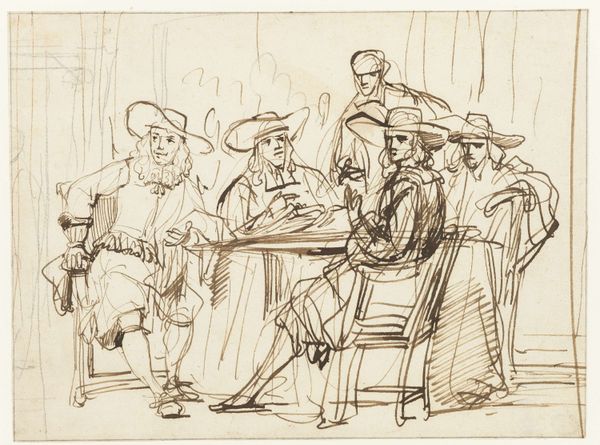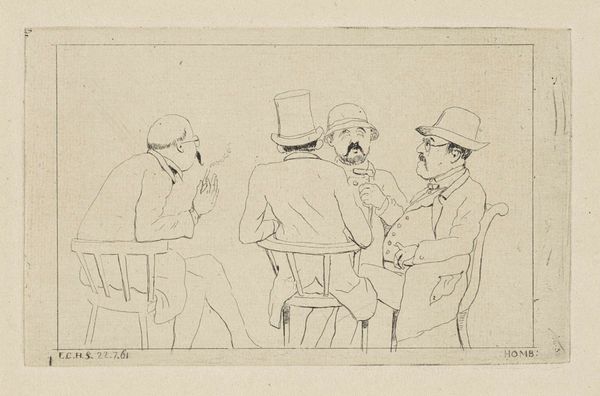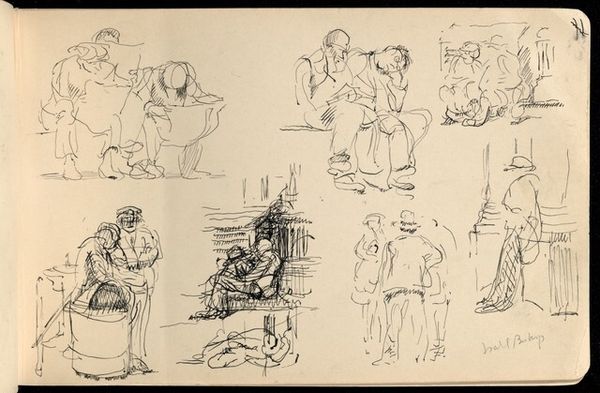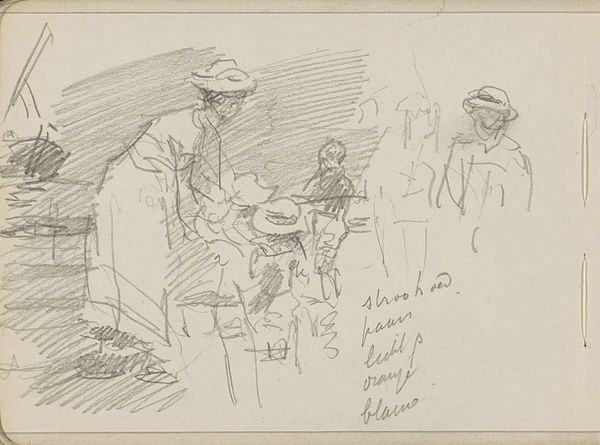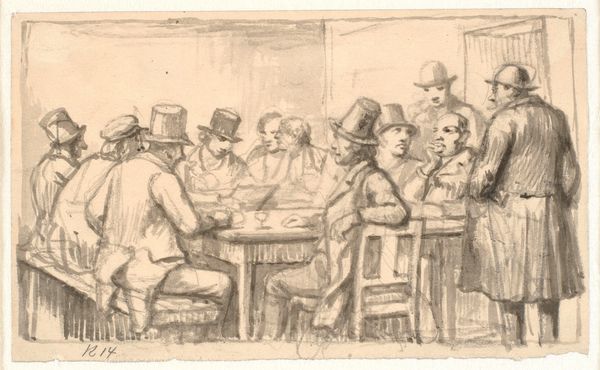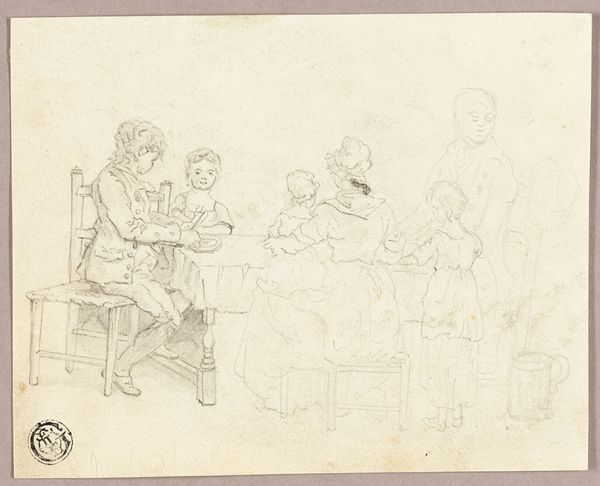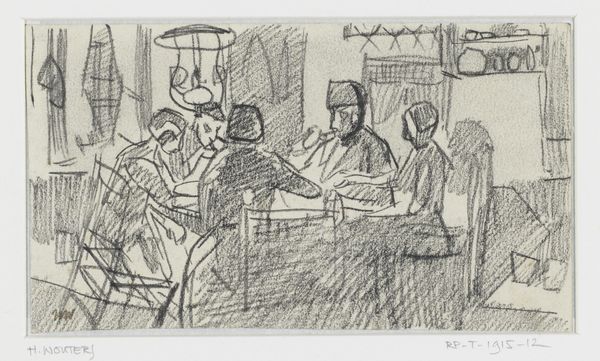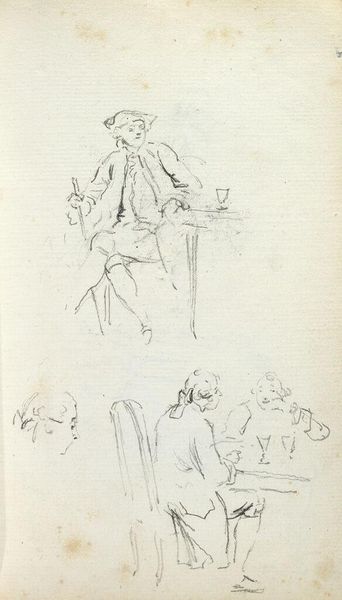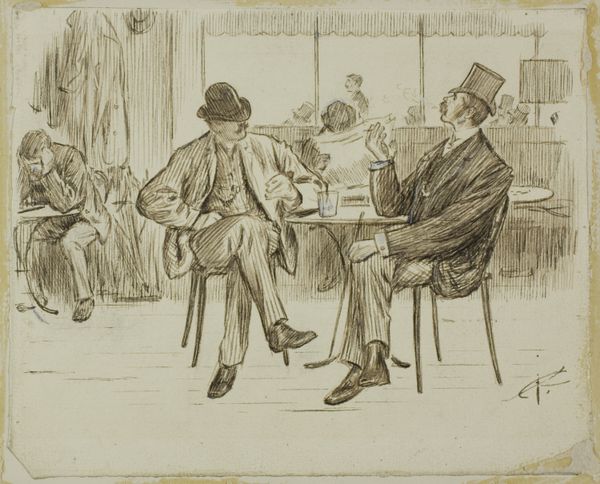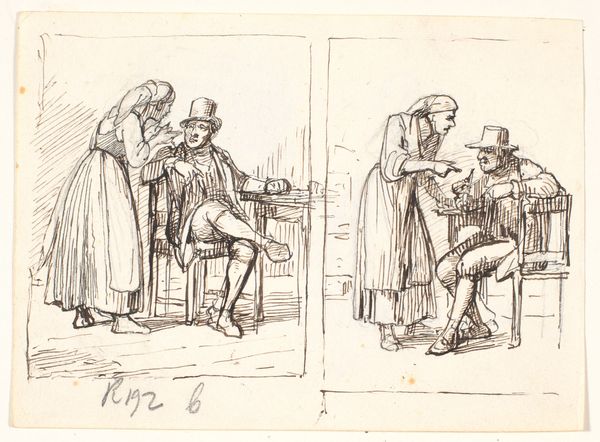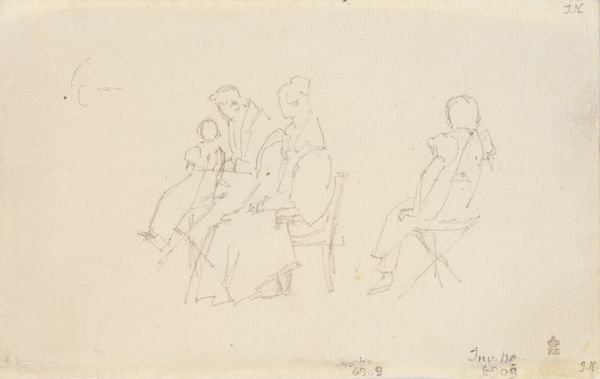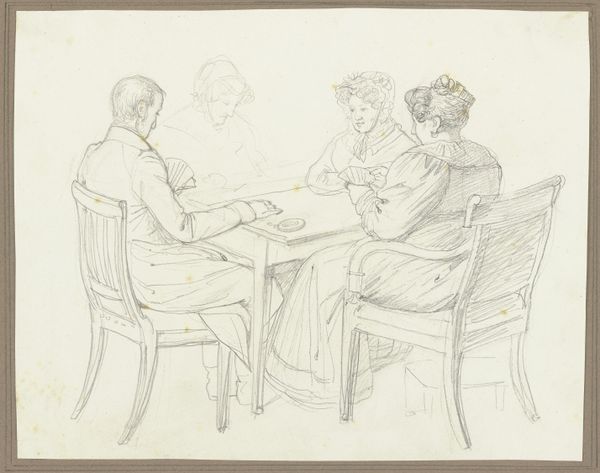
Tre mænd, den ene præst, i samtale ved et cafébord, siddende kvinde med barn, kvinde og tyk mand 1810 - 1873
0:00
0:00
drawing, pencil
#
portrait
#
drawing
#
group-portraits
#
romanticism
#
pencil
#
genre-painting
Dimensions: 178 mm (height) x 228 mm (width) (bladmaal)
Editor: This is a pencil drawing by Wilhelm Marstrand, dating from 1810 to 1873. It’s called "Tre mænd, den ene præst, i samtale ved et cafébord, siddende kvinde med barn, kvinde og tyk mand." Which translates to "Three men, one a priest, in conversation at a café table, seated woman with child, woman and fat man." It's a busy sketch, full of different figures and groups. What formal elements stand out to you? Curator: What arrests me immediately is the composition. Marstrand juxtaposes multiple scenes, yet binds them using the uniformity of his medium—the humble pencil. Notice how the strong diagonal lines in the central grouping of men contrast with the softer, almost maternal curves in the other figural groupings, but does this add or detract from the whole? Editor: It’s like he's experimenting, fitting different scenes together on a single plane. What about the varying levels of detail? Curator: Precisely. Note the strategic deployment of line weight. Where his subjects command attention, the lines thicken, providing depth and gravitas. Yet elsewhere, lines are so faint they’re almost ethereal, suggesting fleeting moments or nascent ideas. We see here a dance of presence and absence, drawing and perception. The figures serve as symbols within the whole composition, don't you think? Editor: I see what you mean, it’s not just a sketch of figures, but the visual interplay of each vignette on the plane. But it still gives me a narrative sense. Curator: And this narrative impulse could be considered part of the function of the elements: it leads our eyes and thoughts, adding dimension to an otherwise commonplace composition. Editor: That’s so interesting. I was thinking only about what it meant; but I can see the forms at work, organizing the sketches and conveying different weights. Curator: And from there we could consider, through deconstruction, how meaning is derived. We’ve begun to think critically and formally about the image itself and how these elements, working together, function, perhaps even narrate, which brings us full circle!
Comments
No comments
Be the first to comment and join the conversation on the ultimate creative platform.

